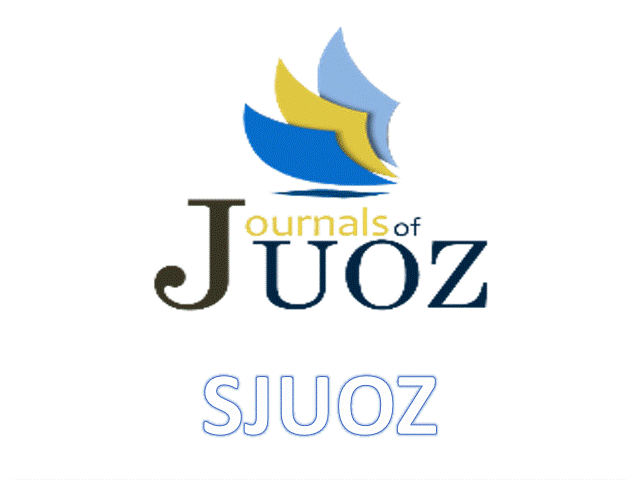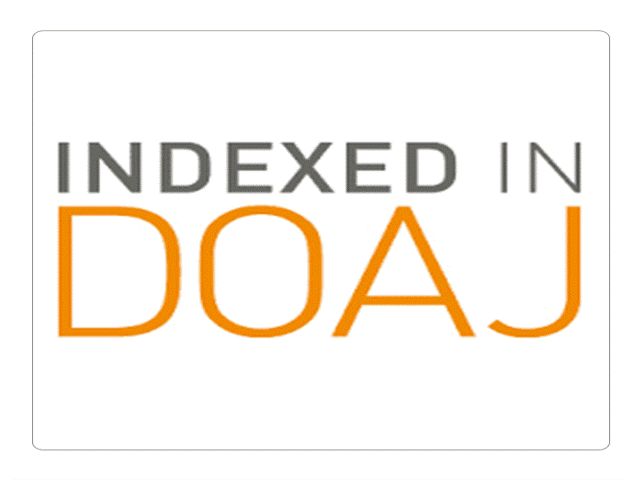Comparative Study of the Endocrine Disorders of Βeta-Thalassemia Major Patients and Control Group in Duhok Province
DOI:
https://doi.org/10.25271/sjuoz.2018.6.4.539Keywords:
β-Thalassemia, FT4, TSH, Estradiol, TestosteroneAbstract
Beta- thalassemia major is a type of inherited blood disorder, characterized by impaired synthesis of the beta chains. Currently, blood transfusion and sufficient iron chelation therapy are important for treatment and follow up of thalassemia patients. Unfortunately, repeated blood transfusion causes the progressive iron overload. Consequently, the excess iron is deposited as hemosiderin and ferritin in the tissues and multiple endocrine complications. In comparison with healthy control group, the results indicated significant (p<0.05) increased TSH level (3.86 ± 2.7 1µIU/ml), whereas the serum level of T4 hormone did not significantly differ between the two groups. In the thalassemia patients, 23.68% (9/38) had subclinical hypothyroidism. The mean level of estradiol in patients (30.60± 14.68pg/ml) is high significant (p< 0.01) decreased that compared with the control persons (13.83 ± 9.06 pg/ml) more than 13 years. Testosterone level in patients was significantly different (P< 0.001) respectively from the control group. The mean of testosterone level was 1.22± 0.83 ng/ml in thalassemia patients and 3.71± 1.32ng/ml in control group more than 14 years. These results indicate high prevalence hypothyroidism and puberty defection. Endocrine drugs supplementation is a safe for patients which have each type of endocrine disorders.
Downloads
References
Al-Hakeim, H. K., Al-Khakani M. M and Al-Kindi, M.A.(2015).Correlation of Hepcidin Level with Insulin Resistance and Endocrine Glands Function in Major Thalassemia. AdvClinExp Med., vol.24, pp. 69–78.
Al-Samarrai, A.H ., Adaay, M.H., Al-Tikriti, K.A., Al-Anzy, M.M.(2008). Evaluation of some essential element levels in thalassemia major patients in Mosul district Iraq.Saudi Med J, vol.29, pp. 94–97.
Asad, Z.T., Ghazanfari, M., Naleini, S.N., Sabagh, A and Kooti, W.(2016). Evaluation of serum levels in T3 T4 and TSH in beta-thalassemic patients referred to the Abuzar hospital in Ahwaz. Electron Physician, vol.8,pp. 2620-4.
Au, W.Y., Lam, W.W., Chu, W.W., Yuen, H.L., Ling, A.S., Li RC et al.(2009).A cross sectional magnetic resonance imaging assessment of organ specific hemosiderosis in 180 thalassaemia major patients in Hong Kong. Haematologica, vol.93, pp.784–6.
Aydinok, Y., Darcan, S., Polat, A., Kavakli, K., Nigli, G., Coker, M., Kantar, M and Cetingul, N.(2002
). Endocrine complications in patients with b-thalassemia major. Journal of Tropical Pediatrics, vol.48, pp. 50–54.
Ayoub, N., Khaleel., K. J and Mohammed, I.I.(2016). Hypothyroidism in transfusion dependent β-thalassemia. Iraqi Journal of Cancer and Medical Genetics, vol. 9, pp. 36-39.
Berkovitch, M., Bistritzer, T., Milone, S.D., Perlman, K., Kucharczyk, W and Olivieri, N.F.(2000). Iron deposition in the anterior pituitary in homozygous beta-thalassemia: MRI evaluation and correlation with gonadal function. J PediatrEndocrinolMetab., vol.13, pp.179-84.
Bhat, A., Parwani, R., NandWanjari, S. P.(2013). Demonstration of iron in exfoliated buccal cells of β-thalassemia major patients. J Cytol.,vol. 30, pp,169–173.
Borgna-Pignatti, C and Galanello, R(2004). Thalassemia and related disorders: quantitative disorders of hemoglobin synthesis. In introbe's Clinical Hematology, eleven th edition: Lippincott Williams & Wilkins. Philadelphia, 1319-65.
Cao, A and Kan, Y. W.(2013). The Prevention of Thalassemia. Cold Spring HarbPerspect Med., vol.3, pp. a011775. doi: 10.1101/cshperspect.a011775.
Cao, A and Galanello, R.(2010). Beta-thalassemia. Genetics in Medicin., vol.12, pp. 61–76.
Carmina, E., Di Fede, G ., Napoli, N., Renda, G ., Vitale, G., Lo, P.C., Bruno, D., Malizia, R and Rini, G.B.(2004). Hypogonadism and hormone replacement therapy on bone mass of adult women with thalassemia major. Calcif Tissue Int., vol.74, pp.68-71.
Chirico, V., Rigoli, L., Lacquaniti, A.., Salpietro, V., Piraino, B et al.(2015). Endocrinopathies, metabolic disorders, and iron overload in major and intermedia thalassemia: Serum ferritin as diagnostic and predictive marker associated with liver and cardiac T2* MRI assessment. Eur J Haematol., vol. 94, pp. 404-412.
De Sanctis, V., Eleftheriou, A and Malaventura, C.(2004). Prevalence of endocrine complications and short stature in patients with thalassemia major: a multicenter study by the Thalassemia International Federation (TIF). PediatrEndocrinol Rev., vol2, pp. 249-55.
Dundar, U., Kupesiz, A., Ozdem, S., Gilgil, E ., Tuncer, T., Yesilipek, A and Gultekin, M.(2007). Bone metabolism and mineral density in patients with beta-thalassemia major. Saudi Med J., vol. 28, pp.1425-9.
Fung, E., Harmatz, P.R and Lee P.D et al.(2006). Increased prevalence of iron overload associated endocrinopathy in thalassaemia versus sickle cell disease.Br J Haematol., vol.135, pp.574–82.
Galanello, R and Origa,v.(2010). Beta-thalassemia. Orphanet J Rare Dis., vol. 5,pp11.
Ghosh, S., Bandyopadhyay, S.K., Bandyopadhyay, R., Roy, D., Maisnam, I and Ghosh, M.K..(2008). A study on endocrine dysfunction in thalassaemi., J Indian Med Assoc., vol. 106, pp. 655-6, 658-9.
Hassan, NAR ., Musa, RJ and Abdullah, SA.(2013). Effect of Iron overload and lipid peroxidation on thyroid function in Iraqi patients with ß-Thalassemia. Asian Journal of Applied Sciences, vol.1, Issue.
Hegazi, M. A.M., Obada, M.A and Elsheashaey, A.M.(2013). Effect of Iron Overload on Function of Endocrine Glands in Egyptian Beta Thalassemia Patients. Journal of Applied Sciences Research, vol. 9, pp.4656-4662.
Hershko, C.(2010). Pathogenesis and management of iron toxicity in thalassemia. Ann N Y Acad Sci., vol. 1202, pp.1–9.
Jain, M., Sinha, R.S., Chellani, H and Anand, N.K.(1995). Assessment of thyroid functions and its role in body growth in thalassemia major. Indian pediatr., vol.32, pp. 213-9. PMID: 8635784.
Kyriakou, A and Skordis, N.(2009). Thalassaemia and aberrations of growth and puberty. Mediterr J Hematol Infect Dis., vol.1,pp. e2009003.
Lekawanvijit, S and Chattipakorn, N.(2009). Iron overload thalassemic cardiomyopathy: Iron status assessment and mechanisms of mechanical and electrical disturbance due to iron toxicity. Can J Cardiol., vol. 25, pp.213–218.
Mahdi, E. A.(2014). Relationship between Oxidative Stress and Antioxidant Status In Beta Thalassemia Major Patients. ActaChim. Pharm. Indica., vol.4, pp.137-145.
Malik, S.A., Syed, S and Ahmed, N.(2010).Frequency of hypothyroidism in patients of beta-thalassemia. J Pak Med Assoc., vol. 60,pp.17-29.
Merchant, R.H., Shirodkar, A and Ahmed, J. (2011). Evaluation of growth, puberty and endocrine dysfunctionsin relation to ironoverload in multi transfused Indian thalassemia patients. Indian JPediatr., vol, pp. 679-83.
Moayeri, H and Oloomi , Z.(2006). Prevalence of growth and puberty failure with respect to growth hormone and gonadotropins secretion in beta-thalassemia major. Arch Iran Med., vol,9, pp.329-34.
Mula-Abed, W., Al-Hashimi, H., Al-Muslahi, M., Al-Muslahi, H and Al-Lamki, M.(2008).Prevalence of Endocrinopathies in patients with beta-thalassemia major a cross-sectional study in Oman. Oman Med., vol. 23, pp.257-261.
Noetzli L.J, Panigrahy A, Mittelman S.D, Hyderi A, Dongelyan A, Coates TD et al.(2012). Pituitary iron and volume predict hypogonadism in transfusional iron overload. Am J Hematol., vol 87, pp.167-71.
Olivieri, N. F and Brittenham, GM.(1997). Iron-chelating therapy and the treatment of thalassemia. Blood, vol,89, pp.739-61.
Pirinccioglu, A ., Deniz, T., Gokalp, , D., Beyazit, N., Haspolat, K and Soker, M .(2011).Assessment of thyroid function in children aged 1 – 13 years with beta – thalassemia major. Iran J. pediatr., vol. 21,pp. 77 -82.
Roussou, P., Tsagarakis, N.J ., Kountouras, , D., Livadas, S and Diamanti-Kandarakis, E. (2013). Beta-thalassemia major and female fertility: the role of iron and iron induced oxidative stress. Anemia. 617204
Sagare, A and Trivedi, D. J .(2014). Assesment of Transferrin Saturation as an Indicator of Iron Overload in Homozygous &Hetrozygous Form of Thalassemia. Research Journal of Pharmaceutical. Biological and Chemical Sciences, vol. 5, pp. 669- 673.
Salih, K. M and Al-Mosawy, W. F.(2013). Evaluation Some Consequences Of Thalassemia Major In Splenectomized And Non-Splenectomized Iraqi Patient. Int J Pharm Pharm Sci., vol.5, pp. 385-388.
Sharaf, A. E. A. , Ali, S. H and Abo-Elwafa, H. A.(2014). Evaluation of puberty in relation to iron overload in multi transfused B-thalassemia patients. Journal of American Science, vol.10, pp. 1-7.
Shizukuda, Y., Bolan, C.D and Nguyen, T et al.(2007). Oxidative stress in asymptomatic subjects with hereditary hemochromatosis, Am J Hematol., vol. 82 , pp.249–250.
Soliman, A., Al Yafei, F., Al-Naimi, , L., Almarri, N., Sabt, A and Yassin, M et al.(2013):Study on linear growth and thyroid function for 12 years in patients with β thalassemia major.Endocrine, vol.32,pp.992
Telfer, P. T., Warburton, F., Christou, S., Hadjigavriel, M., Sitarou, M and Kolnagou, A.(2009).Improved survival in thalassemia major patients on switching from desferrioxamine to combined chelation therapy with desferrioxamine and deferiprone. Haematologica., vol.94, pp 1777-8.
Tiosano, D and Hochberg, Z,(2001). Endocrine Complications of Thalassemia. Journal of Endocrinological Investigation, vol.24, pp716-723.
Weatherall, D.J and Clegg, J.B.(2001). The Thalassemia syndromes fourth edition. United Kingdom: Blackwell Science.
Zervas, A., Katopodi, A., Protonotariou, A., Livadas, S., Karagiora, M., Politis, C and Tolis, G .(2002). Assessment of thyroid function in two hundred patients with β-thalassemia major. Thyroid, vol. 12, pp. 151–154.
Downloads
Published
How to Cite
Issue
Section
License
Copyright (c) 2018 Ghorbat S. Ali, Amad M.S. Jubrial, Malika K. Najeeb, Hamdia Y.I. Al hussein

This work is licensed under a Creative Commons Attribution 4.0 International License.
Authors who publish with this journal agree to the following terms:
- Authors retain copyright and grant the journal right of first publication with the work simultaneously licensed under a Creative Commons Attribution License [CC BY-NC-SA 4.0] that allows others to share the work with an acknowledgment of the work's authorship and initial publication in this journal.
- Authors are able to enter into separate, additional contractual arrangements for the non-exclusive distribution of the journal's published version of the work, with an acknowledgment of its initial publication in this journal.
- Authors are permitted and encouraged to post their work online.








